Western Antarctic glacier is melting so rapidly it releases 2.16 BILLION tonnes of ice into the ocean every year thanks to climate change, study warns
>
One of the most frightening effects of global warming is rising sea levels, which could submerge hundreds of coastal cities underwater this century.
The main cause of sea level rise is the melting of glaciers – slowly moving masses of ice, found mainly at the Earth’s poles.
Unfortunately, scientists have identified a glacier in West Antarctica that is losing mass at an alarming level as the ice flows into the sea.
Dubbed the Cadman Glacier, this river is releasing a whopping 2.16 billion tons of ice into the ocean every year due to climate change, researchers warn in a new study.
For this reason, its thickness steadily decreases at a rate of about 65 feet (20 m) per year—the equivalent of a five-story building.
This photo shows Cadman Glacier before and after the collapse of its ice shelf – the part at the end of the glacier where the ice extends into the sea. The photo on the left was taken in February 2017; The right photo was taken earlier this month
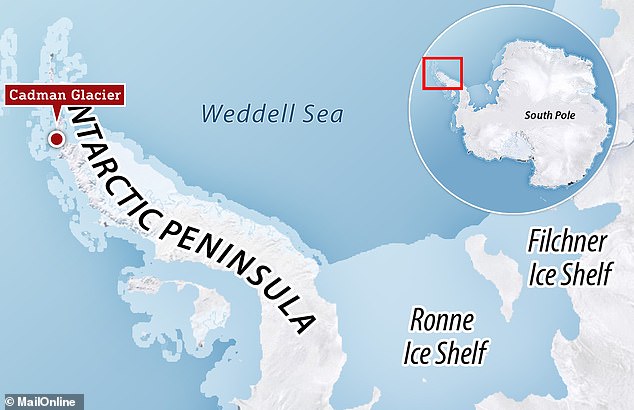
Most of the world’s glaciers are in Antarctica. This map shows the location of Cadman Glacier, on the Antarctic Peninsula (the part of Antarctica that sticks out from the mainland like a tail)
The new study was led by glaciologists at the University of Leeds, who warned that even seemingly stable glaciers in Antarctica could “shift very quickly” and lose significant amounts of ice. In a few years.
“We were surprised to see how quickly Cadman went from being an apparently stable glacier to one where we see sudden degradation and significant ice loss,” said author Benjamin Wallis from the University of Leeds.
Glaciers are slowly moving rivers of ice that, although they are solid, actually flow like a river.
Glacial ice is constantly moving, although this movement is too slow to be noticed by the human eye.
Instead, scientists rely on time-lapse cameras and satellites to show the movement of glacial ice and how quickly it is moving.
The team, in collaboration with experts from the British Antarctic Survey, used satellites to track the Cadman Glacier, which empties into Piscotia Bay, west of the Antarctic Peninsula (the part that juts out from the mainland like a tail).
They found that between November 2018 and May 2021, the glacier retreated five miles (eight kilometres) as the ice shelf at the end of the glacier collapsed.
An ice shelf is where ice extends into the sea and is anchored to the sea floor in what is known as a grounding zone.
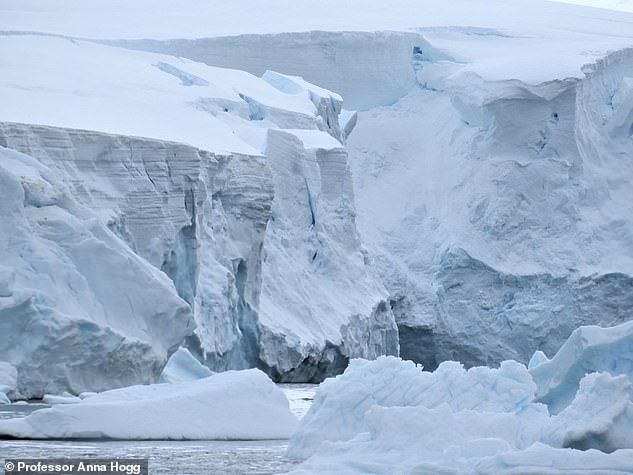
Glaciers (pictured) are slowly moving rivers of ice that, although they are solid, actually flow like a river
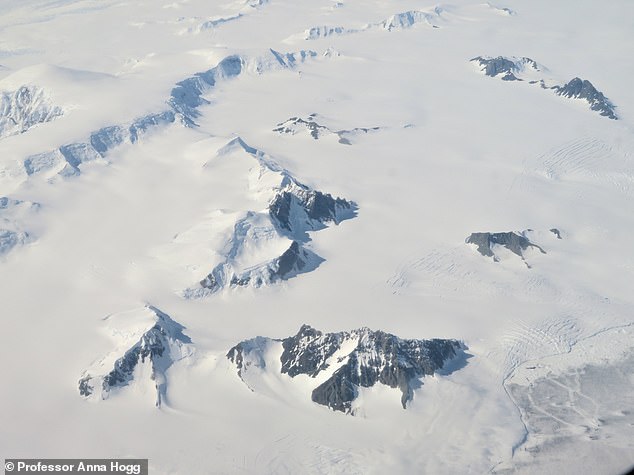
Experts rely on time-lapse cameras and satellites to show the movement of the glacial ice and how quickly it is moving. Pictured are the mountains and glaciers of the Antarctic Peninsula from above
The ice shelf would have acted as a buttress, slowing the movement of the glacier towards the sea, but its collapse means that the glacier ice is now more able to enter the sea.
The researchers found that the speed at which the glacier was flowing had doubled, increasing the amount of ice it discharged into the sea in the form of icebergs (a process known as “iceberg calving”).
In 2018 or 2019, the ice shelf was so thin that it broke away from the grounding zone and began to float, in effect causing the anchor to slip and enabling Cadman Glacier to drain more ice into the seas.
Researchers believe that unusually high ocean water temperatures around the western Antarctic Peninsula during these years caused the “rapid changes” in Cadman Glacier.
However, the origin of its decline likely goes back much longer.
The team says warmer ocean waters have been gradually shrinking the glacier’s ice shelf since the early 2000s and perhaps since the 1970s, largely due to emissions from industrial activity and the resulting global warming.
Interestingly, other glaciers adjacent to Cadman Glacier – such as Funke and Lever – have remained relatively stable, but the team is not sure why.
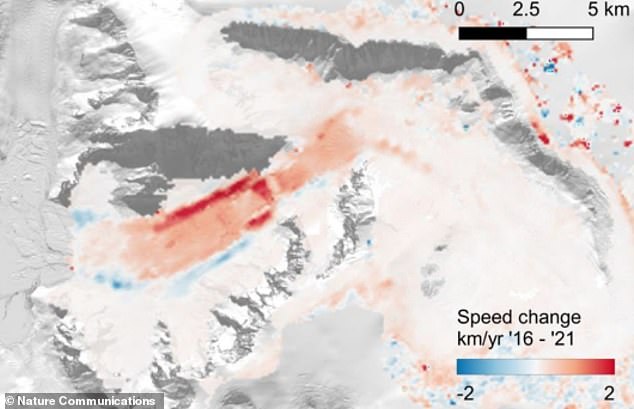
Scientists found that the speed at which the glacier was flowing accelerated significantly, doubling its speed, which led to an increase in the amount of ice that it discharged into the sea in the form of icebergs. This image shows the areas of the glacier that saw the highest increase in velocity between 2016 and 2021 in red.
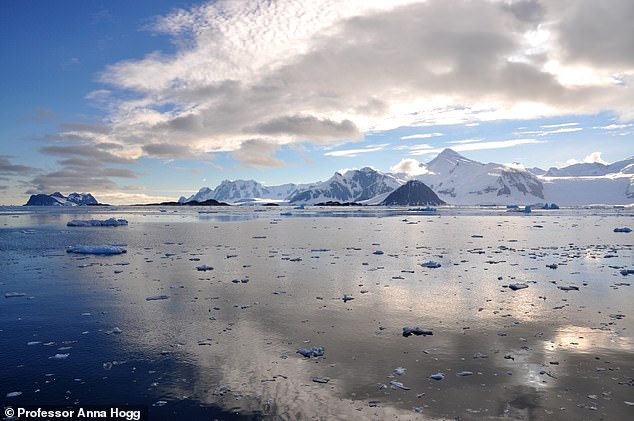
Pictured is the icy coastline of the Antarctic Peninsula (the part of Antarctica that sticks out from the mainland like a tail)
The answer may lie in undersea rock structures called ridges, found about 650 to 750 feet underwater.
These ridges likely served as a defensive barrier, preventing warm water channels from reaching the Funk and Lever glaciers.
According to scientists, Cadman Glacier is now in a state of “major dynamic disequilibrium”, meaning its future is in doubt.
“Our results show that forcing with warm ocean waters can cause rapid onset of dynamic disequilibrium and increased ice discharge from glaciers on the Antarctic Peninsula, highlighting the region’s sensitivity to future climate variability,” they say.
“The Cadman Glacier and the Piscotia Bay system, including the Funk and Lever Glaciers, are strong candidates for further studies and fieldwork measurements.”
The study was published in the journal Nature Communications.
(tags for translation)dailymail
